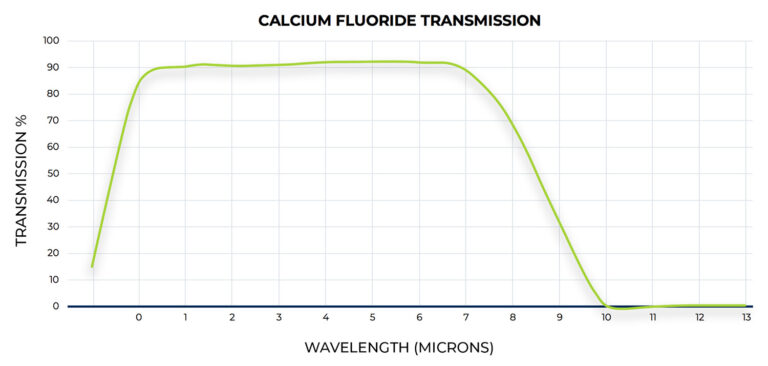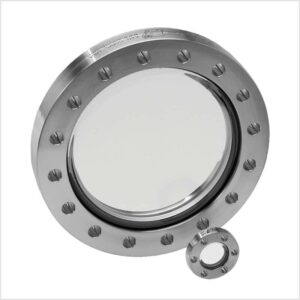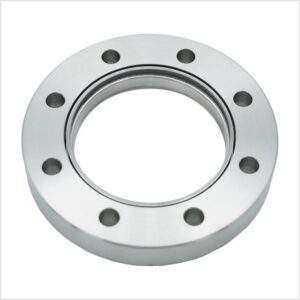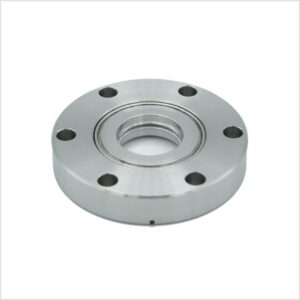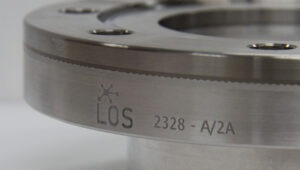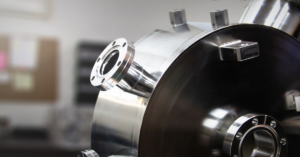6 High Vacuum Viewport Materials and their Selection

Viewports often called windows or sight glasses, allow observation, illumination, and transmission within a high or ultra-high vacuum (UHV) chamber. Vacuum viewports come in various flange materials, connections, and window coatings to provide a versatile product for any high vacuum application. ANCORP’s window material selection includes borosilicate glass, fused quartz, sapphire, zinc selenide, magnesium fluoride, and calcium fluoride. Flange body materials include 304 stainless steel, 316LN stainless steel, and titanium.
With such an extensive range of options available, it could be challenging to select the right viewport. However, there’s no need to worry as we have assembled this guide to assist you in choosing the appropriate viewport for your high or ultra-high vacuum application.
If a viewport’s primary purpose is to be used for general viewing, then a borosilicate viewport would best serve your needs. Fused silica, also known as quartz, viewports offers the best DUV and UV transmission range making it the most appropriate material for precision optics and laser applications. Harsh environments and heat require a material that is both durable and has a low thermal coefficient making sapphire viewports the best choice. Infrared applications will often equip zinc selenide viewports due to the materials transmission in the near IR to IR range. Both magnesium fluoride and calcium fluoride transmit into the VUV-Alpha Lyman range, but differ in their main applications. Magnesium fluoride is used when a viewport must withstand exhibit resistance to physical stress and thermal shock. With such a low laser damage threshold, calcium fluoride is used for its laser and chemical resistance.
Table of Contents
Borosilicate Glass Viewport
Borosilicate glass offers a broad, distortion-free viewing area and is best suited for general purposes such as viewing the inside a vacuum chamber. In addition, the material has high transmission in the visible range and a low coefficient of thermal expansion, making it resistant to thermal shock.
Borosilicate viewports are available with zero-length profiles and come in various flange attachments. These configurations include ConFlat (CF), ISO-QF (KF, NW, quick flange), and ISO-LF (ISO-K, large flange) flanges.
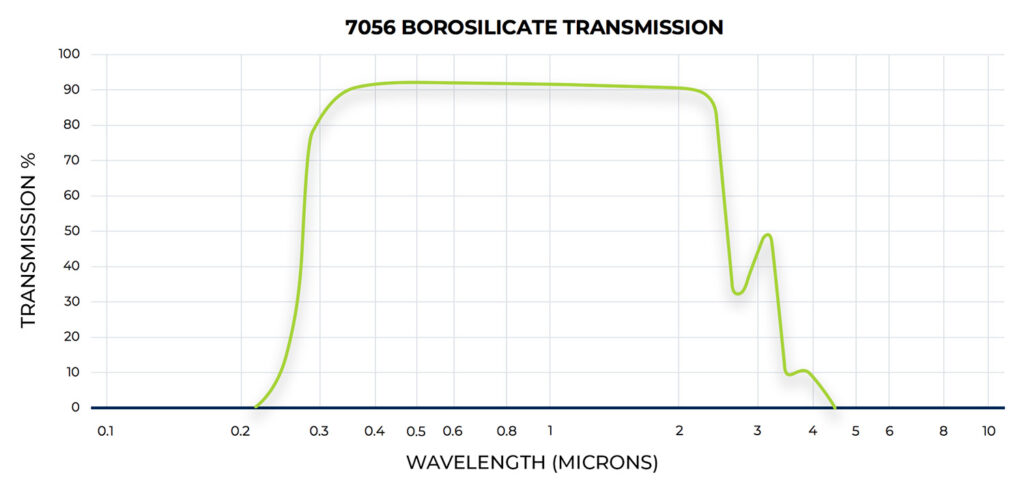
Fused Silica (Quartz) Viewport
Fused silica (quartz) viewports feature a window made of ultra-pure, non-crystalline, synthetic quartz with outstanding optical and thermal properties. The fused silica material is colorless, resistant to abrasion and thermal shock, non-birefringent, and has a high working temperature.
These characteristics, combined with transmission properties in the ultraviolet (UV) and deep ultra-violet (DUV) range, make fused silica viewports ideal for precision optics and laser applications.
Single-layer coating and broadband coating are available for DUV grade fused silica viewports. The coating is applied to both surfaces of the viewport window for improved anti-reflection (AR). Single AR coating options are 780nm or 1064nm with R values less than 0.25% per surface. Broadband AR coating options include two ranges, 425-760nm and 550-1100nm, both with R values less than 0.25%.
Quartz viewports are bakeable to 200ºC with ramp rates of 20ºC per minute. Titanium and 316LN stainless steel are available as alternative flange materials.
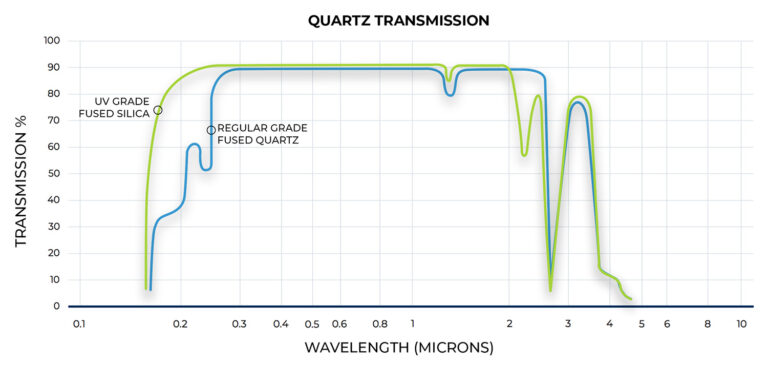

Sapphire Viewport
Sapphire viewports are excellent for applications using harsh environments and high temperatures as it is a durable material that is scratch-resistant, birefringent, and has a low coefficient of thermal expansion. The material also has a broad transmission range from ultra-violet (UV) to near infrared (NIR).
Sapphire viewports are bakeable to 450º C with ramp rates of 20ºC per minute. Titanium and 316LN stainless steel are available as alternative flange materials. Flange styles available for this viewport are ConFlat (CF) and ISO-QF (quick flange, KF, NW) in zero-length profiles preserving vacuum environments in the ultra-high vacuum (UHV) range.
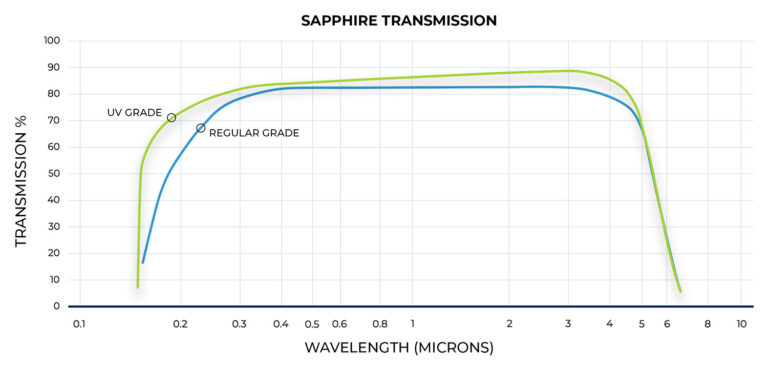
Zinc Selenide Viewport – ZnSe
Zinc selenide (ZnSe) has high transmission in the near infrared range to infrared range, making it the ideal material for IR applications such as thermal imaging. In addition, the material has low absorption and high resistance to thermal shock.
Zinc selenide viewports are bakeable up to 200ºC with ramp rates of 20ºC per minute. Titanium and 316LN stainless steel are available as alternative flange materials. Coating options include uncoated or broadband anti-reflective (BBAR) coating at 8-12 microns.
ZnSe viewports have ConFlat (CF) flange style connections with QF (KF) as an alternative option.

Magnesium Fluoride Viewport – MgF2
Magnesium fluoride transmits a wide range from the vacuum ultraviolet (VUV) to mid-IR and is birefringent, very durable, and resistant to physical stress and thermal shock. Magnesium fluoride and calcium fluoride are the two viewport materials that will transmit into the VUV-Alpha Lyman range at 121nm.
MgF2 viewports are bakeable to 200º C with 20ºC per minute. Titanium and 316LN stainless steel are available as alternative flange materials. Flange styles available for this viewport are ConFlat (CF) flanges with zero-length profiles with ISO-QF flanges (quick flange, KF, NW) available as an alternative option.

Calcium Fluoride Viewport – CaF2
Calcium fluoride (CaF2) has a broader transmission range than magnesium fluoride from vacuum ultra-violet (VUV) to infrared (IR). The material has a low index of refraction, low absorption, moisture resistance, chemical resistance, and a high laser damage threshold. Its birefringent quality is ideal for chemical and laser applications in ultra-high vacuum (UHV) environments.
Calcium fluoride is one of two viewport materials that will transmit into the VUV-Alpha Lyman range at 121nm, the other being magnesium fluoride. CaF2 viewports are bakeable up to 200ºC with a ramp rate of 20ºC. Titanium and 316LN stainless steel are available as alternative flange materials.
